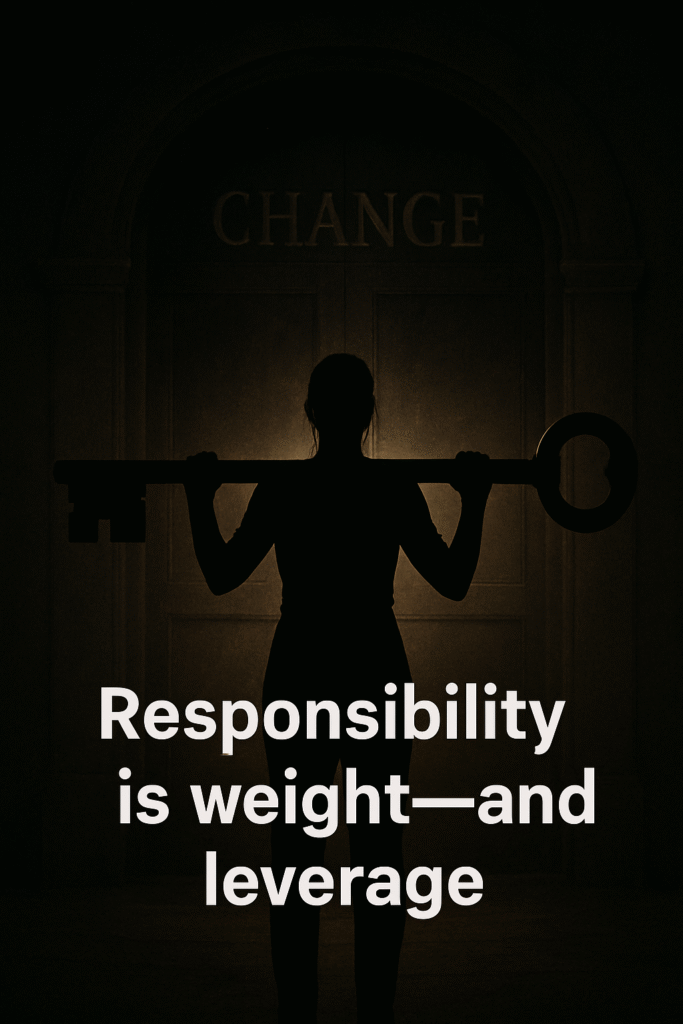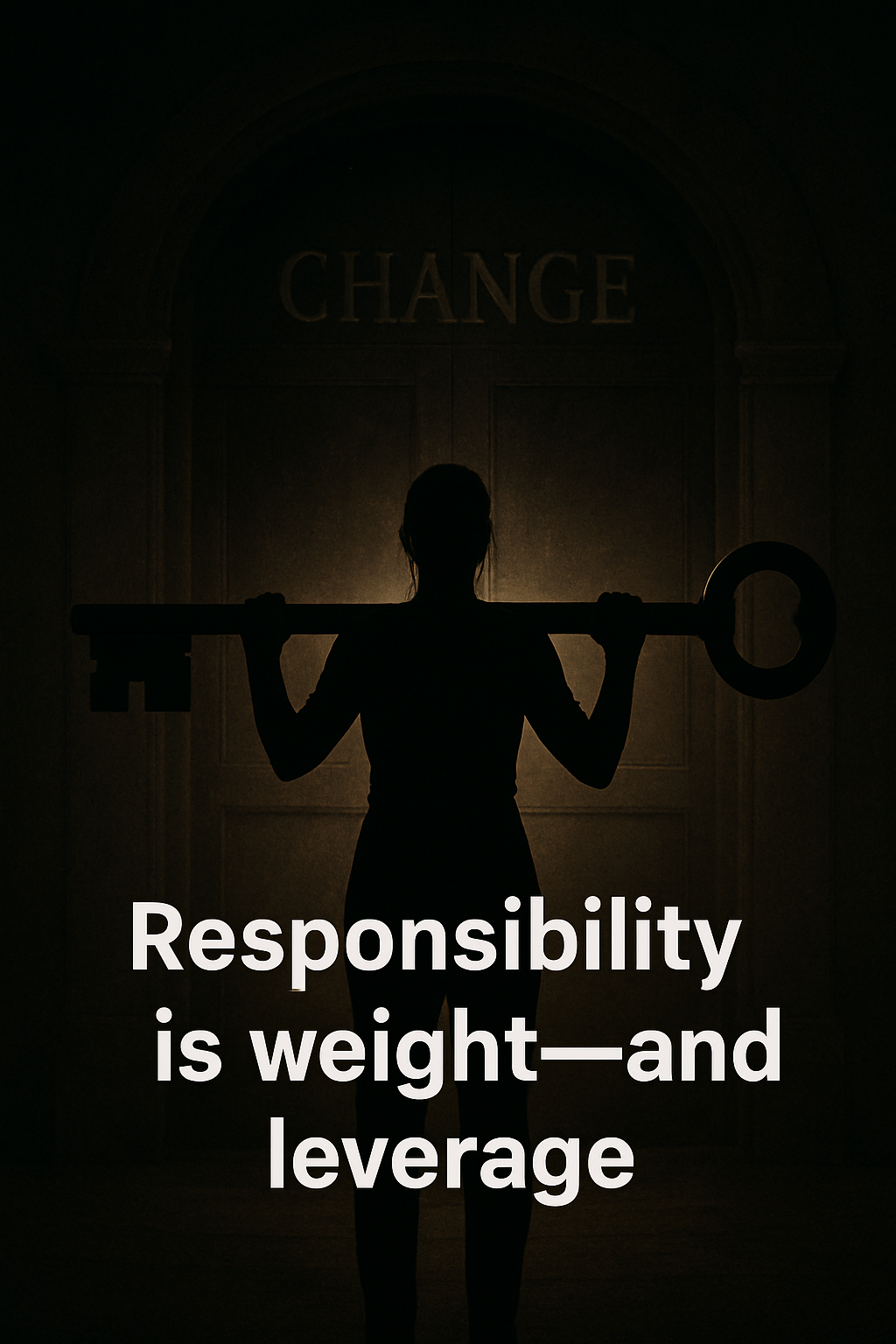The Tightrope of ADM Leadership
Assistant Deputy Ministers (ADMs) live at the critical juncture where government policy meets organizational reality. Unlike Ministers and Deputies, you are not setting the political agenda. Unlike Directors General (DGs), you are not solely responsible for operational delivery. Instead, you occupy the middle ground where policy intent must be translated into executable action.

The challenge of the ADM role is that you must constantly balance competing pressures: political urgency against bureaucratic caution, long-term transformation against short-term crises, and the responsibility to decide against the ever-present temptation to defer. The question is not whether you feel the weight of responsibility—it is what you do with it.
The Scope and Gravity of ADM Accountability
The responsibilities of an ADM extend beyond a single program or branch. You oversee vast portfolios with hundreds of staff and budgets in the hundreds of millions, sometimes billions. The public and your Deputy Minister expect results.
This is not abstract. Your decisions shape service delivery that affects Canadians daily: the flow of benefits, the timeliness of regulatory approvals, the implementation of policies that touch everything from health to trade to the environment.
But with this responsibility comes a temptation: to shield yourself from risk by escalating decisions upward. The Deputy becomes the real decision-maker, while the ADM presents advice. At first glance, this seems safe. But over time, it erodes leadership credibility, slows transformation, and signals to the organization that accountability is something to be avoided, not embraced.
The Cultural Terrain: Risk Aversion and Hesitation
Every ADM knows that the federal public service culture is deeply risk-averse. It is not an accident; it has been cultivated for decades. Media scrutiny, political turnover, and public criticism all encourage bureaucrats to avoid mistakes at almost any cost.
For ADMs, the challenge is that cultural inertia pulls you into the same gravitational field. The instinct is to consult more, delay decisions, or wait until consensus is complete. But the reality is that consensus in government is rarely total, and waiting for it often means paralysis.
One ADM described the trap this way:
“Every time I hesitated, it cascaded down. My DGs waited for me, and their directors waited for them. Before long, an entire branch was in a holding pattern. I realized my caution was shaping the culture more than my words.”
The Illusion of Control Through Process
Process is essential to government. It ensures transparency, accountability, and fairness. But for ADMs, process can also become a hiding place.
Governance committees multiply. Briefing notes circulate endlessly. Decision decks are perfected and repackaged for yet another round of review. From the outside, it looks like progress; from the inside, it feels like control. But in reality, nothing moves.
This is the illusion of control through process. True control comes not from additional layers of approval, but from clarity of ownership. The most effective ADMs use process to support decision-making—not to avoid it. They insist that process ends in accountability, not in perpetual circulation.
Cultural Intelligence: Reading the Unspoken Signals
Cultural intelligence is the ADM’s secret weapon. It is the ability to see not only the structures of government, but the unspoken norms that drive behaviour.
When a DG resists committing to a path forward, is it because they genuinely lack information, or because they fear being blamed if it goes wrong? When managers consistently escalate decisions that should be theirs, is it because of competence gaps, or because the culture rewards upward delegation?
An ADM with cultural intelligence can read these signals, diagnose the underlying issues, and act accordingly. It is not enough to manage the technical aspects of transformation. You must also address the cultural inhibitors that slow it down.
Independent Insight: Seeing the System You’re Embedded In
The difficulty is that ADMs are embedded in the very culture they must change. It is nearly impossible to see clearly when you are inside the system. That is where independent insight becomes invaluable.
Independent perspective shines a light on blind spots:
- Where process is substituting for progress.
- Where caution has calcified into avoidance.
- Where cultural inertia is misread as technical difficulty.
This insight does not replace ADM leadership. Instead, it sharpens it. It gives you the confidence to make decisions, even when conditions are imperfect. It equips you to model the accountability your DGs and managers need to see.
The Cascade Effect: Modeling Ownership
The ADM’s behaviour has a cascading effect. When you step forward and make clear decisions, DGs gain permission to do the same. When DGs take ownership, directors stop reflexively escalating. And when directors take accountability, managers and staff feel empowered to act.
Conversely, when ADMs hesitate, the cascade works in reverse. Everyone waits. Everyone defers. And transformation dies not because of one large failure, but because of a thousand small delays.
This is why ADM leadership is so critical. You do not simply manage a branch—you set the cultural tone for how accountability is understood across the organization.
Leadership Courage: The Heart of the ADM Role
Ultimately, ADM leadership is not about perfection of advice or elegance of process. It is about courage.
- Courage means making decisions without every piece of information.
- Courage means acting without universal consensus.
- Courage means owning responsibility when outcomes are uncertain.
Without courage, expertise and process are paralyzed. With courage, they are activated. Every decisive act from an ADM becomes a cultural signal that accountability is possible, desirable, and rewarded.
Conclusion: The ADM as Cultural Architect
The ADM role is more than managing portfolios. You are a cultural architect. You shape the norms of accountability, the pace of transformation, and the willingness of the organization to act.
If you choose to own the weight of responsibility, you set in motion a cascade that transforms not just programs, but culture. If you defer, the cascade works in the opposite direction, reinforcing the hesitation that already dominates the system.
Transformation requires ADMs who act with cultural intelligence, process discipline, and above all, courage. The weight of responsibility is real—but it is also the lever of change.
What’s Next?
Take hold of the lever. Contact Institute X for independent insight that strengthens ADM leadership in navigating accountability, culture, and transformation.
References
- Savoie, D. (2019). Democracy in Canada: The Disintegration of Our Institutions.
- OECD (2020). Leadership for a High-Performing Civil Service.

